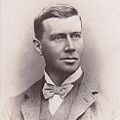| Nottingham East | |
|---|---|
| Borough constituency for the House of Commons | |
 Boundaries since 2024 | |
 Boundary of Nottingham East in the East Midlands | |
| County | Nottinghamshire |
| Electorate | 75,327 (2023) [1] |
| Major settlements | Nottingham |
| Current constituency | |
| Created | 1974 |
| Member of Parliament | Nadia Whittome (Labour) |
| Seats | One |
| Created from | Nottingham Central and Nottingham South |
| 1885–1955 | |
| Seats | One |
| Type of constituency | Borough constituency |
| Created from | Nottingham |
| Replaced by | Nottingham Central and Nottingham North |
Nottingham East is a constituency [n 1] represented in the House of Commons of the UK Parliament since 2019 by Nadia Whittome of the Labour Party. [n 2]
Contents
- Members of Parliament
- MPs 1885–1955
- MPs since February 1974
- Constituency profile
- Boundaries
- Historic
- Current
- History
- Elections
- Elections in the 2020s
- Elections in the 2010s
- Elections in the 2000s
- Elections in the 1990s
- Elections in the 1980s
- Elections in the 1970s
- Elections in the 1950s
- Elections in the 1940s
- Elections in the 1930s
- Elections in the 1920s
- Elections in the 1910s
- Elections in the 1900s
- Elections in the 1890s
- Elections in the 1880s
- See also
- Notes
- References
- External links



